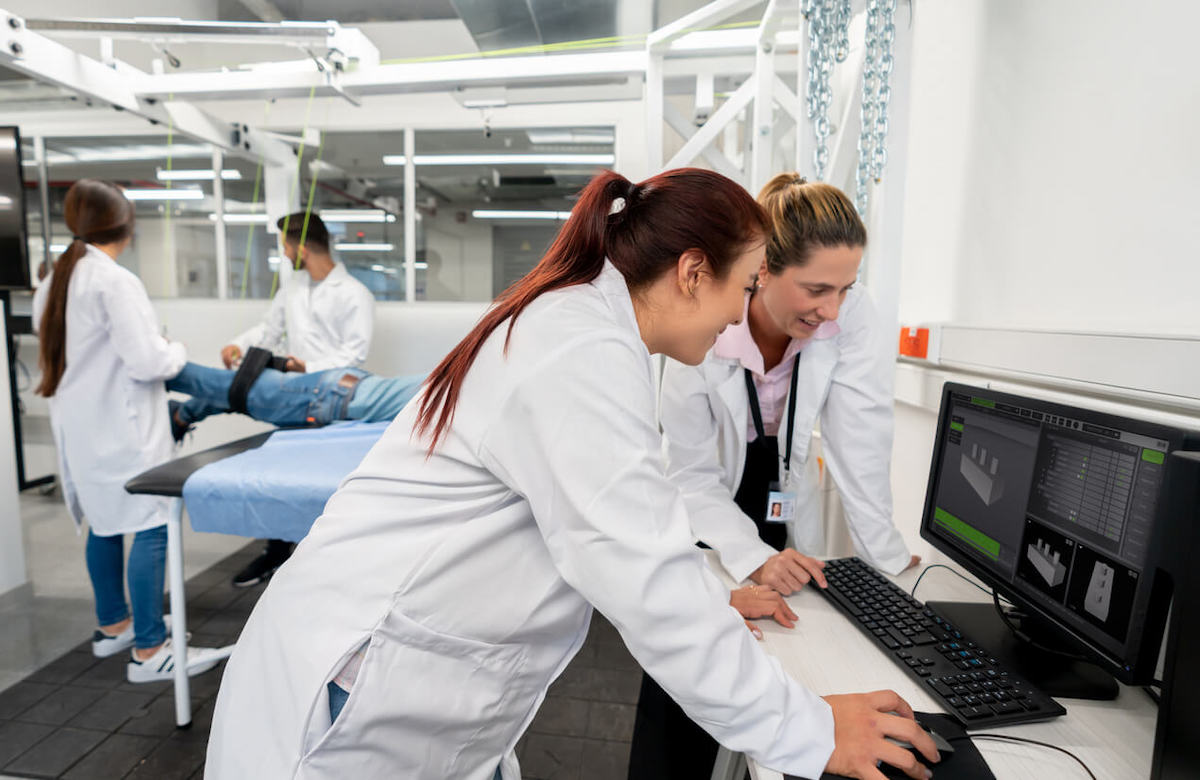
Key Considerations for Choosing the Right Graduate Program
October 22, 2024
Going to graduate school is a big decision, and you want to make you choose the right program. Here are a few factors you should consider during your search.

By Shayna Joubert
January 19, 2023
Do you know the difference between human movement science and kinesiology? While both areas of study overlap, the programs are not the same. Kinesiology is an older field that historically developed out of physical education, physical therapy, and gym class programs. As kinesiology grew in popularity, it expanded beyond physical education.
Human movement and rehabilitation sciences is a newer field that evolved from kinesiology. Human movement focuses on the physics and behavioral aspects behind how and why humans move. While many colleges and universities still offer kinesiology programs, others created new disciplines like human movement and rehabilitation science programs to consider current and ongoing advances in technology.
Human movement science takes an interdisciplinary approach to understand how science can inform human movement. Jack Dennerlein, program director of Northeastern’s Master of Science in Human Movement and Rehabilitation Sciences, adds, “We use human movement and rehabilitation sciences instead of kinesiology because it’s where our university intersects engineering with science, arts, media, and design. As opposed to an old school approach through physical education, we’ve created an innovative program that uses the intersection of these other fields to try and solve a problem.”
Download our free guide to learn the skills you need to advance in the industry.
An MS in Human Movement and Rehabilitation Sciences program studies how people move in different contexts and how it relates to the analysis, improvement, and recovery of physical activity. At Northeastern’s Bouvé College of Health Sciences, this degree focuses on typical day-to-day human movement, such as the physics, behavior, and motivation of how the body reacts to movement. The MS in Human Movement and Rehabilitation Sciences prepares students—and the next generation of scientists—to learn how our bodies can work optimally by focusing on the following:
In other words, at Northeastern’s Bouvé College of Health Sciences, the Human Movement and Rehabilitation Sciences program is where engineering intersects with Northeastern’s College of Science. Human movement studies how our joints move and how our bodies react to physical and mechanical stress, especially when dealing with issues related to injury and rehabilitation. The program also examines how healthy people move and interact with the environment—and how the environment can impact movement.
HMRS is a new field of study strategically designed as a holistic program built around the science of movement at its heart. In many ways, this program has filled a gap in learning at the university. Our MS in Human Movement and Rehabilitation Sciences involves a significant design element, which makes it ideal for students that seek a career related to design. More specifically, this degree supports students interested in creating gear or equipment that helps humans perform better or more fully, including exoskeletons, prosthetics, and body armor for the military and police.
An MS in Kinesiology focuses on how exercise physiology can improve people’s lives and maximize the body’s athletic performance. This degree prepares students for careers in performance, health, fitness, rehabilitation, and research with coursework in:
Kinesiology is a helpful degree for students interested in a career related to physical activity, health, and wellness. This field explores how physical activity can improve function, prevent injury, and accelerate recovery. Kinesiology students also examine how sports and athletics intersect with business and culture, often landing careers that help an organization offer better healthcare. Some roles supported by kinesiology degrees include:
If you’re wondering which program will support your career goals, it’s important to note that some career paths between human movement and kinesiology are interchangeable. Both kinesiology students and MS in Human Movement Rehabilitation Sciences graduates are likely to apply for jobs such as:
However, it is important to highlight that MS in HMRS uniquely intersects technology, science, art, and design. Human movement science integrates applied ideas around technology while actively considering how work is changing for the future.
So, if you’re looking for a job with a design aspect, you’ll gain a competitive advantage by having the technology exposure and experience from a program like Northeastern University’s Master of Science in Human Movement and Rehabilitation Sciences. As the world continues to move forward and make new strides with technology and AI, it is beneficial for today’s graduates to gain these skills as more jobs become technology-focused.
Learn more about the program and apply today or download our free career guide for everything you need to know about breaking into the field of human movement and rehabilitation sciences.

October 22, 2024
Going to graduate school is a big decision, and you want to make you choose the right program. Here are a few factors you should consider during your search.

October 22, 2024
Now that you’re about to earn a kinesiology degree, here’s an overview of seven possible career paths you can work toward pursuing post-graduation.

January 18, 2023
Interested in a career in human movement research? Here’s a look at 35 companies with a track record of hiring human movement experts.